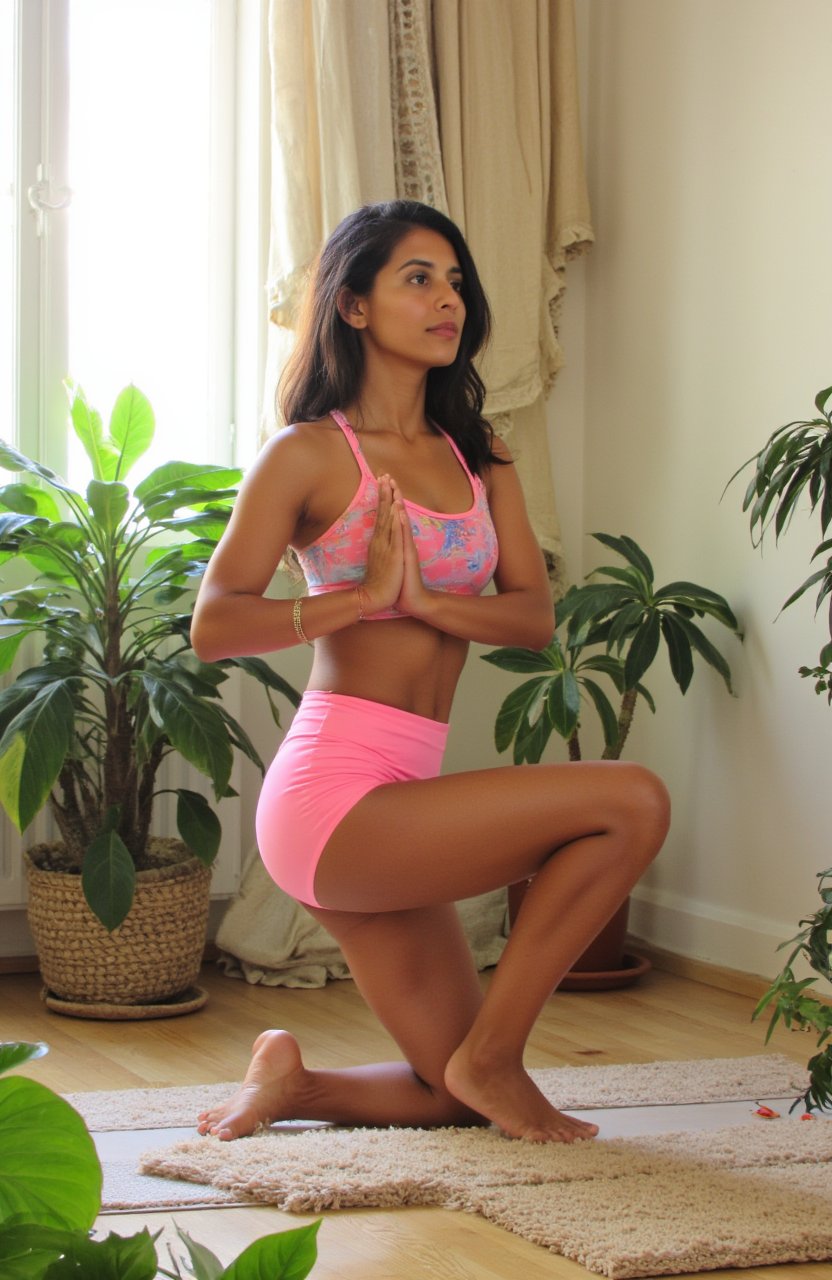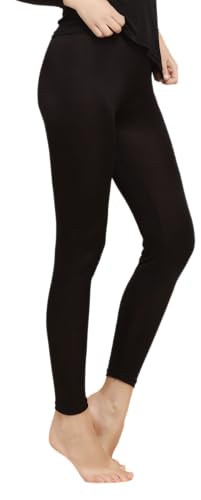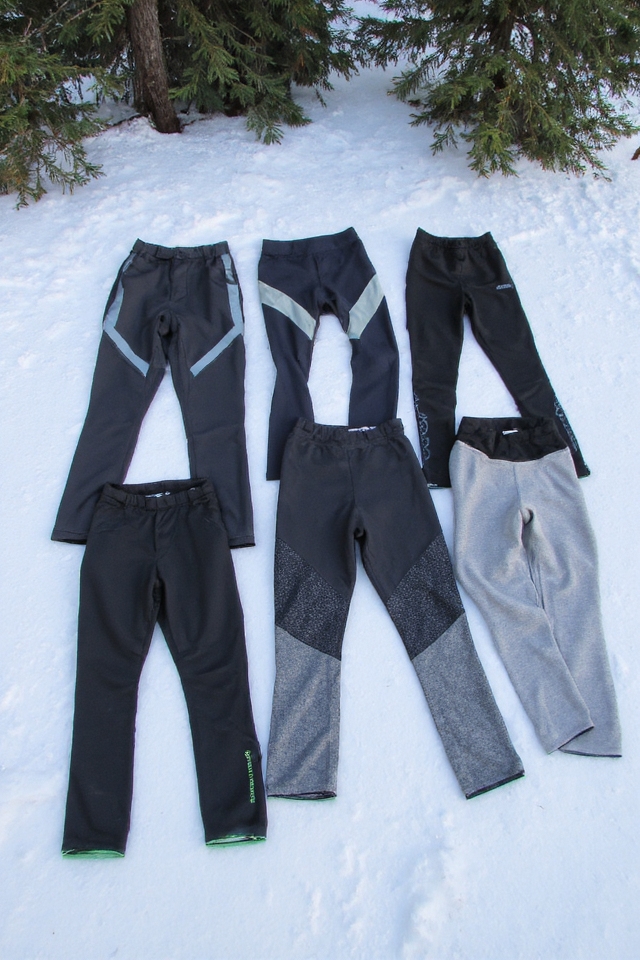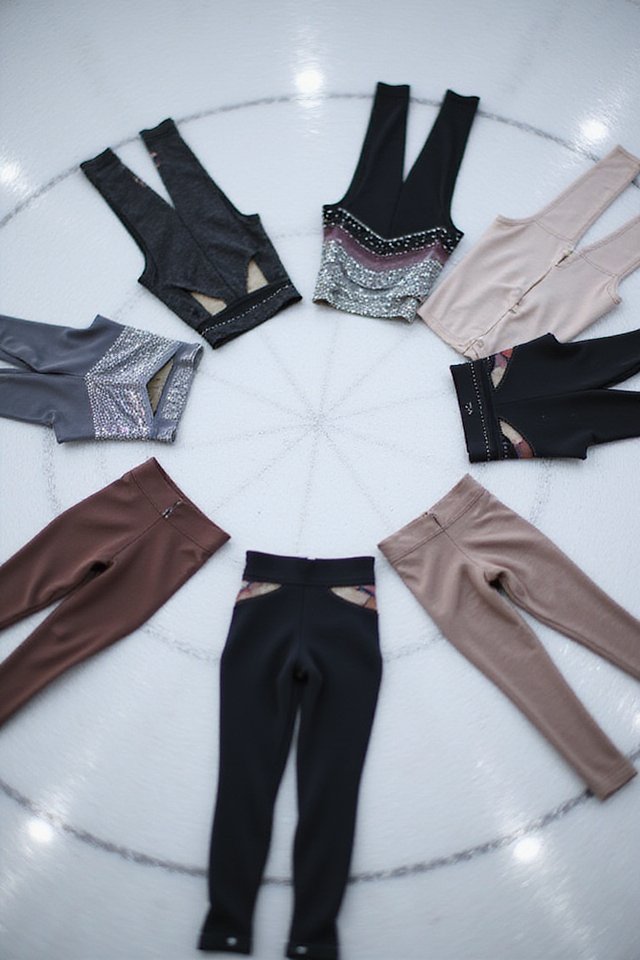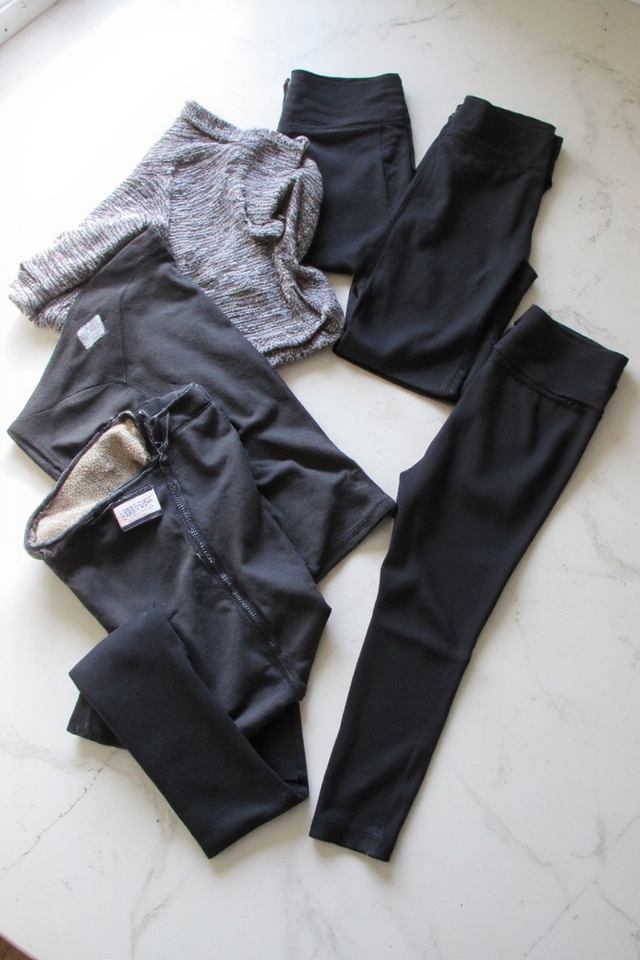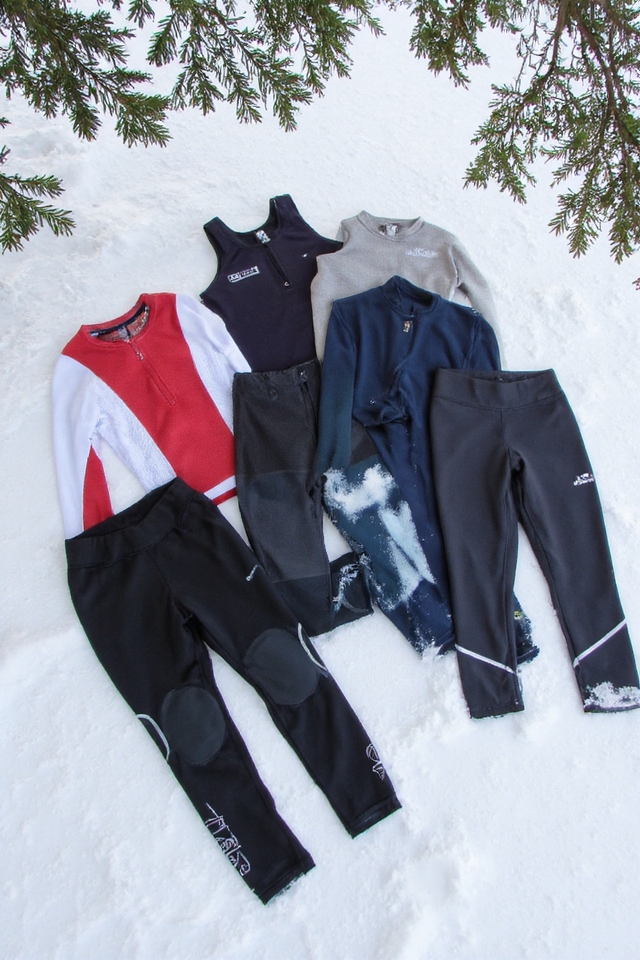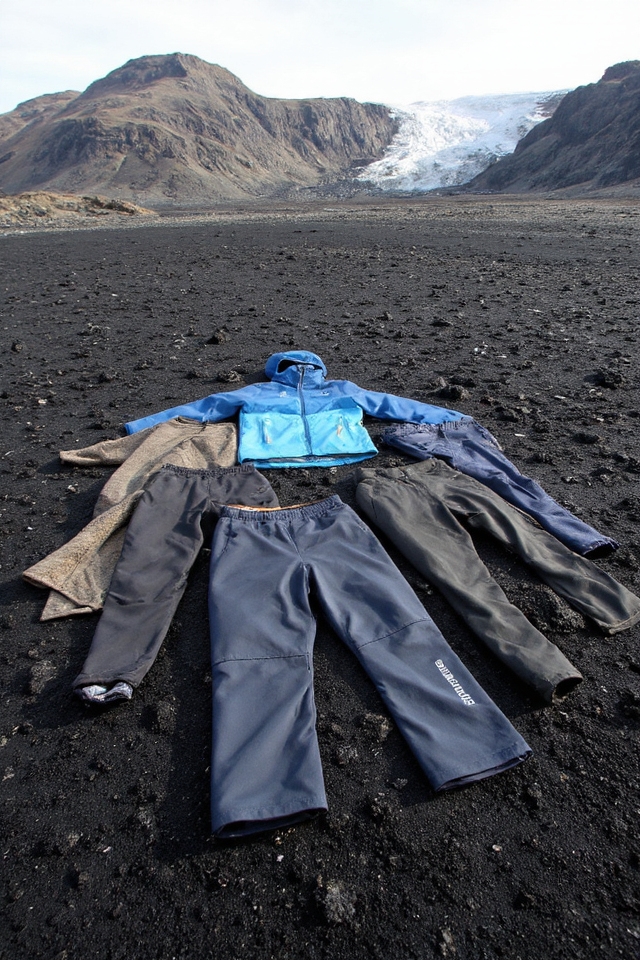You’ll stay toasty in merino wool leggings that regulate temperature naturally, thermal high-rise styles that block cold air gaps, or polyester-cotton blends that wick moisture while feeling soft. Compression leggings boost circulation during winter workouts, fleece-lined options trap heat with brushed interiors, silk layers add luxe warmth without bulk, and three-quarter lengths work perfectly with tall boots. Each style layers seamlessly under your favorite winter pieces while keeping you comfortable all season long.
Merino Wool Base Layer Leggings

Merino wool base layer leggings are a game-changer when you’re building your winter wardrobe, and they’ll quickly become your cold-weather best friend.
These natural fiber wonders regulate your body temperature like nothing else can. You’ll stay toasty without overheating, and they’re naturally odor-resistant too.
Layer them under your favorite jeans, snow pants, or even dresses for unbeatable warmth that moves with you.
Thermal High-Rise Leggings
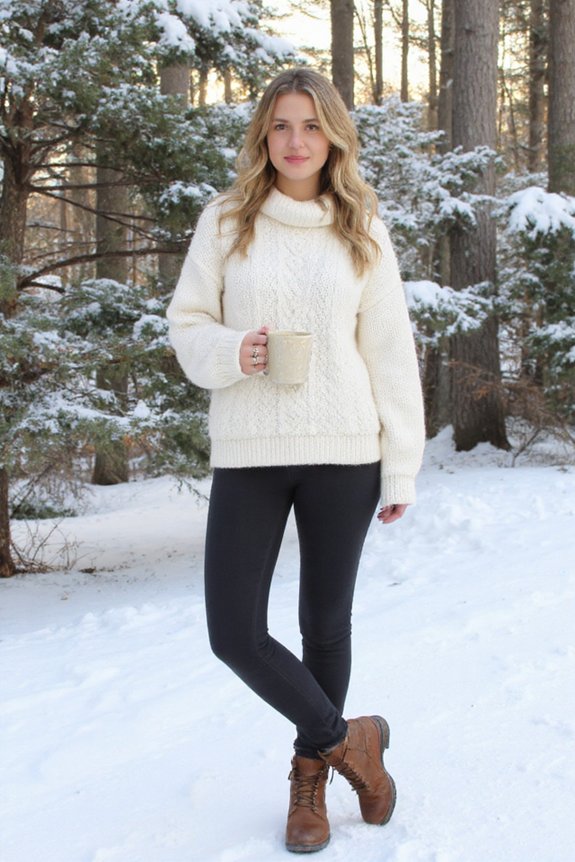
When you’re facing freezing temperatures, thermal high-rise leggings deliver the coverage and warmth you’ve been searching for.
The waistband sits perfectly at your natural waist, eliminating gaps where cold air sneaks in.
You’ll love how they layer seamlessly under midi skirts, oversized sweaters, and long coats.
Choose pairs with brushed interiors for extra coziness, and you’re set for winter’s worst days.
Polyester-Cotton Blend Base Layers
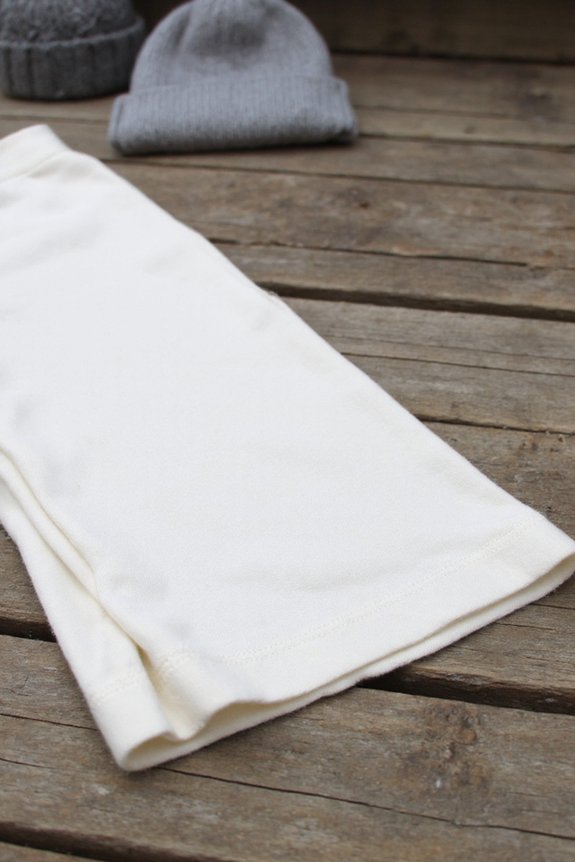
While pure fabrics have their place, polyester-cotton blend base layers offer the perfect balance of performance and comfort for everyday winter wear.
You’ll love how these versatile leggings wick moisture while staying soft against your skin. The cotton adds breathability, while polyester guarantees quick-drying performance.
They’re ideal under jeans for errands or beneath ski pants on the slopes. Plus, they maintain their shape wash after wash.
Compression Performance Leggings
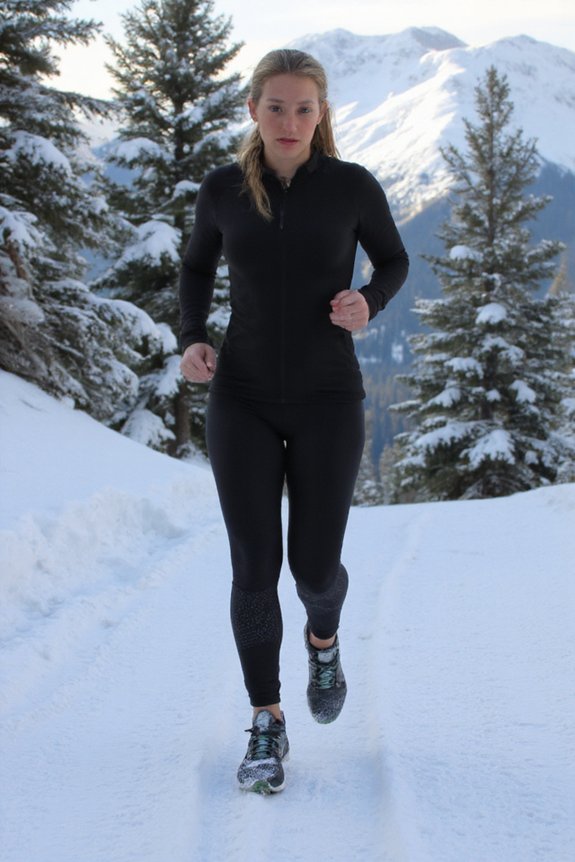
For athletes and fitness enthusiasts, compression performance leggings take winter base layers to the next level.
They’ll boost circulation while you’re running, skiing, or hitting the gym. The graduated compression supports your muscles, reduces fatigue, and speeds recovery time.
Look for moisture-wicking fabrics with flat-locked seams that won’t chafe. You’ll stay warm without bulk, and the sleek fit layers perfectly under snow pants or workout gear.
Fleece-Lined Winter Leggings
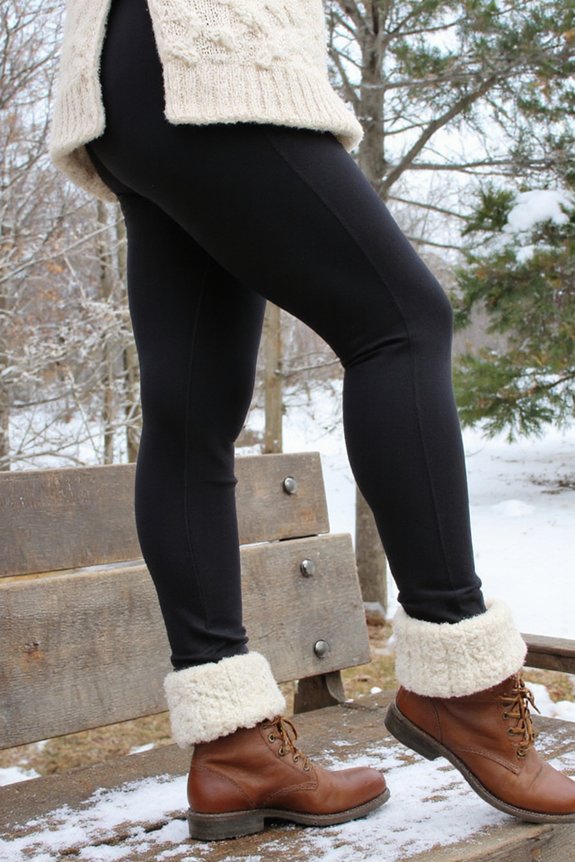
Nothing beats the cozy warmth of fleece-lined winter leggings when temperatures plummet.
You’ll love how the soft brushed interior traps heat against your skin, creating an insulating barrier that keeps you toasty all day.
Choose high-waisted styles for extra core coverage, and look for moisture-wicking fabrics that prevent overheating.
Pair them with oversized sweaters and ankle boots for effortless cold-weather style.
Silk Base Layer Leggings
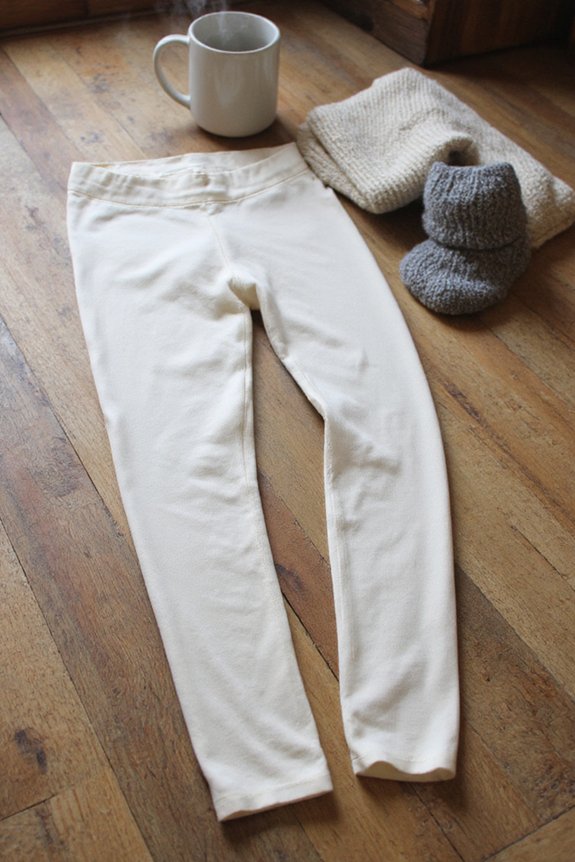
Three key benefits make silk base layer leggings a winter wardrobe necessity.
First, they’re incredibly lightweight yet trap body heat efficiently.
Second, silk’s moisture-wicking properties keep you dry during temperature changes.
Third, they’re thin enough to layer under your favorite jeans without bulk.
You’ll love how silk feels against your skin—smooth, breathable, and naturally temperature-regulating throughout your busy winter days.
Three-Quarter Length Base Layers
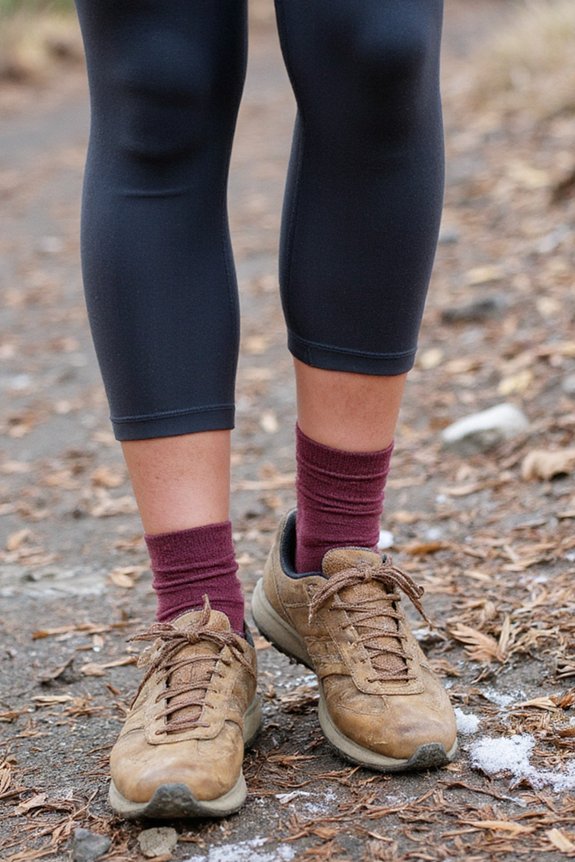
Seven out of ten winter athletes swear by three-quarter length base layers, and you’ll understand why once you try them.
They’re perfect when you’re wearing ankle boots or mid-calf socks—no awkward bunching at your ankles.
The exposed lower leg actually helps regulate your body temperature during intense activities.
You’ll love how they pair seamlessly with your favorite wool hiking socks and trail runners.
Frequently Asked Questions
How Do I Properly Layer Base Layer Leggings With Other Clothing?
You’ll want to start with your base layer leggings directly against your skin.
Add regular pants or jeans over them, ensuring they’re not too tight to restrict circulation.
Layer a fitted tank or thermal top, then add your sweater or shirt.
Don’t forget thick socks that overlap the legging hem.
For maximum warmth, choose merino wool or synthetic moisture-wicking fabrics.
Always check that each layer moves comfortably without bunching up.
Can I Wear Base Layer Leggings Alone Without Outer Pants?
You can absolutely wear base layer leggings solo, but they’re quite form-fitting and often semi-sheer.
For gym sessions or yoga, thermal leggings work wonderfully alone.
Around the house? They’re perfect loungewear.
If you’re heading out, choose thicker, opaque styles in 200+ gram weights.
Pair them with oversized sweaters, tunic tops, or long cardigans that hit mid-thigh for coverage.
Just make sure they’re not see-through in bright lighting.
How Often Should I Wash My Winter Base Layer Leggings?
You’ll want to wash your base layers after every 2-3 wears, depending on your activity level.
If you’re sweating heavily during workouts, wash them after each use. For casual wear, you can stretch it to 3-4 wears.
Always check the care label, but most perform best with cold water and gentle detergent.
Skip the fabric softener—it clogs the moisture-wicking fibers.
Air-dry them to maintain their shape and performance.
What’s the Difference Between Base Layers and Regular Leggings?
You’ll notice base layers are specifically engineered for warmth and moisture-wicking, while regular leggings focus on style and everyday wear.
Base layers use technical fabrics like merino wool or synthetic blends that trap heat and pull sweat away from your skin. They’re typically thinner, fit snugger, and have flat-lock seams to prevent chafing.
Regular leggings? They’re made from cotton blends or polyester, prioritizing comfort and fashion over thermal performance.
Do Base Layer Leggings Shrink After Washing and Drying?
Yes, you’ll notice some shrinkage with most base layer leggings, especially merino wool and cotton blends. They typically shrink about 3-5% after the first wash.
Here’s the thing – synthetic materials like polyester barely budge, but natural fibers tighten up. You can minimize shrinkage by washing in cold water and air-drying.
If you’re between sizes, go up. Pre-shrunk options exist, but they’re pricier. Always check care labels first.

